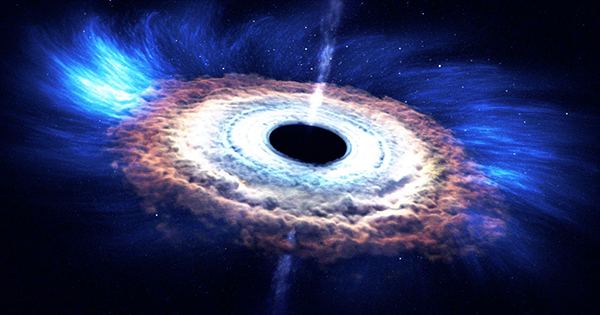The Galaxy ESO 253-G003, located 570 million light-years away, glows regularly every 114 days. How astronomers work now: A supermassive black hole is slowly tearing a star. The star orbits a supermassive black hole, and every 114 days, when it comes close enough to snatch some of the elements from the black hole, a flash of light is released. The dazzling phenomenon known as ASASSN-14ko was first detected in 2014 and was first thought of as a strange supernova.
Last year, top researcher Anna Payne searched data from the All-Sky Automated Survey for Supernovae (ASAS-SN) and discovered the regular eruption, counting 17 peaks at equal intervals every 114 consecutive days. Strange talk was practically announced at the recent 237th meeting of the American Astronomical Society through a research paper submitted to The Astrophysical Journal.
Payne and her team expected new flashes in May, September and December 2020. Seeing 20 repetitive flames, the team now compares this regularity to the Old Faithful Geyser in Yellowstone National Park in the United States. This regularity can open a window in the extreme environment created by supermassive black holes in the center of the galaxy.
Payne, a NASA Graduate Fellow at the University of Hawai’i at Mānoa, said in a statement, “These are the most predictable and frequently repeated multi-wavelength flames we’ve seen from the core of a galaxy, and they give us a unique opportunity to study in detail about this extroverted Old Believer.” “We think a supermassive black hole in the center of the galaxy exploded because it partially swallowed the rotating monster.”
The team also investigated two alternative hypotheses. In one, the stimulus may be the product of interaction between the supermassive black hole of the questionnaire and the second supermassive black hole. Although the ESO 253-G003 has a second supermassive black hole, it is currently too far to interact like this. Other possibilities include a star and a disk of elements that usually surround a supermassive black hole. A star with an inclined orbit will cross this disk by sending this block of material scattered into the black hole. However, this is also not appropriate because the star has to cross the disk twice in its orbit, creating a slightly different flame, and no difference was seen in the flame.
Thus, their argument, most likely, is explained by the supermassive black hole, whose massive mass of millions of solar masses of mass is slowly destroying a star. With each passage, they lose three Jupiter equivalents with a black hole. The team doesn’t know how long it will last or how long it will last but at some point, the star will run out of mass. Payne and her team are now analyzing data from the December stimulus and will continue public observation of forecasts for the upcoming event in April and August this year. An incredible tool in this study is the Transiting Exoplanet Survey Satellite (TSES), NASA’s planet-hunter. Although the TSC looks for planets outside the solar system, its enthusiastic instruments provide some important insights into the flame.















